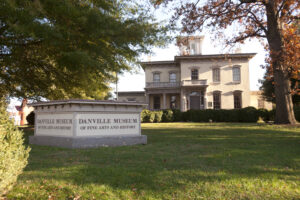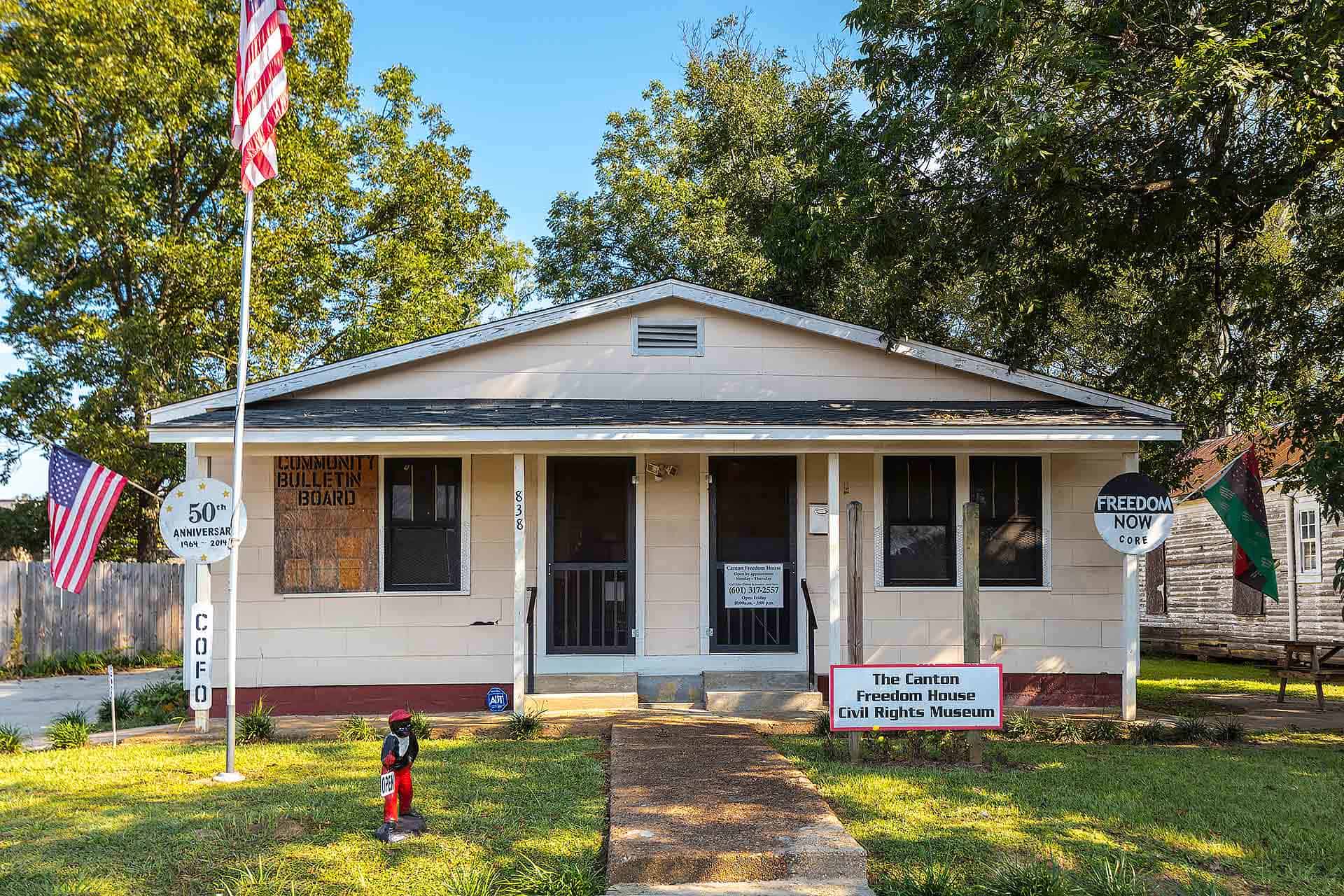SELMA, ALABAMA
In 1865, the Battle of Selma in Selma, Alabama, ended in a crushing defeat for the Confederacy as Union soldiers destroyed the Confederacy’s arsenal about a month before the Civil War’s end. One hundred years later, Selma was the site of one of the most significant events in the civil rights movement — Bloody Sunday. To protest the obstacles faced by Black voters and the murder of activist Jimmie Lee Jackson, peaceful demonstrators attempted to march across Selma’s Edmund Pettus Bridge and were met with violence at the hands of state troopers. Footage of the brutal attacks shocked the nation and eventually spurred the passage of the 1965 Voting Rights Act. Today, groups traveling to Selma can visit the bridge, one of many important sites on the Civil Rights Trail, and the National Park Service’s nearby interpretive center. Other important sites include the Tabernacle Baptist Church, where the first mass meeting of the voting rights movement was held, and Brown Chapel, the site of preparations for the march from Selma to Montgomery. Fans of the movie “Selma” can see the Jackson House, which was featured in the film and hosted Martin Luther King Jr. when he stayed in town. One of the most powerful ways for groups to experience Selma’s extensive civil rights history is with the city’s foot soldiers — tour guides who participated in the march when they were students. “When you meet one of them, they share their experiences of what they experienced during the movement,” said Sheryl Smedley, executive director of the Selma and Dallas County Chamber of Commerce and Tourism Information. In addition to its many historic landmarks and its featured spot on the U.S. Civil Rights Trail, Selma is known for its hospitality and good Southern cooking. Travelers can eat at Lannie’s BBQ, a well-known stop for a hot meal with a side of history.

SARASOTA, FLORIDA
Sarasota has a major historical draw to the area: Lido Beach, the southernmost point on the U.S. Civil Rights Trail. In the 1950s and ’60s, African Americans were allowed to use less than two miles of Florida’s 2,000 miles of shoreline. Demonstrators began staging “wadeins” at Lido Beach that called national media attention to the issue and advanced the fight against segregation. “There was a very key victory for Black and brown people when the NAACP asserted its right to the beach,” said Vickie Oldham, local historian and president and CEO of the Sarasota African American Cultural Coalition Inc.

HARPERS FERRY, WEST VIRGINIA
The picturesque, hilly town of Harpers Ferry, West Virginia, can be found at the convergence of the Potomac and Shenandoah rivers, surrounded by the Harpers Ferry National Historical Park. The red brick buildings, lush forests and rushing rivers make Harpers Ferry seem like something out of a storybook, but there’s more to this idyllic town than meets the eye; in 1859, it was the site of the famous raid led by abolitionist John Brown, who attacked the federal armory in an attempt to lead an uprising and end slavery. Harpers Ferry is also home to Storer College, the first school in the state that educated former slaves. This educational institution was where W.E.B. DuBois held the 1906 conference that planted the seed for the formation of the NAACP.
To learn more about Black history in the area, travelers can follow in the Jefferson County African American Heritage Trail. Sites one through 10 on the trail are located in Harpers Ferry, including the fort where John Brown’s attempted raid took place, the John Brown Museum and Storer College, which features three rooms of exhibits. It’s all part of the history of the African American fight for freedom and equality in the Southeastern U.S., and it sets the stage for the Civil Rights Movement to come.

CANTON, MISSISSIPPI
Canton is also home to many historic sites and important figures in the civil rights movement. The city is committed to preserving and highlighting its diverse history, which is why it created the Canton Multicultural Center and Museum, a museum showcasing the cultural heritage of many of Canton’s residents and the causes they advocated for.
“We of course have a very diverse community,” said Jo Ann Gordon, director of the Canton Convention and Visitors Bureau. “We celebrate many cultures in the area, and in our town, and we have always had the wonderful opportunity to have the African American experience here.”
To learn more about its extensive history in the civil rights movement, groups can take the African American Historical Heritage Driving Tour, which originates in the Canton Welcome Center. From there, a step-on guide will narrate the journey through Canton and the surrounding area, pointing out critical stops on the Civil Rights Trail, such as the Canton Freedom House, where important figures in the movement such as Martin Luther King Jr. organized protests, and the Historic Madison County Courthouse, where demonstrators showed up to register to vote despite the many obstacles placed in their path. It is both a historical and beautiful tour to take.

DANVILLE, VIRGINIA
As the last standing Confederate capital, the quiet city on the Dan River known as Danville, Virginia, was long a source of racial tension. In 1960, Black students staged a sit-in at the Danville Public Library. Rather than allow them to simply do their schoolwork, the library closed altogether. Other protests followed, including the events of Bloody Monday, when demonstrators were met with police brutality.
Today, the same building that once denied entry to its Black citizens is now the Danville Museum of Fine Arts and History, where an exhibit titled “The Movement” presents testimonies of the protestors who staged the sit-in and depicts the struggles they faced in the often dangerous fight for equality. Several other notable historic landmarks can be found in Danville, including High Street Baptist Church, where activists organized demonstrations. They can visit the museum and nearby landmarks to learn about the extensive role the city played in the civil rights movement.

To discover more about this travel guide, visit https://grouptravelleader.com/civilrights/






























